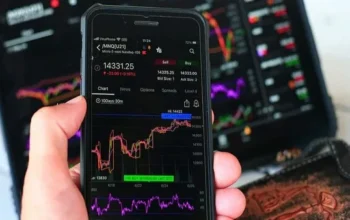For many beginners, staring at a trading chart can feel like looking at a puzzle without instructions. Candlesticks, lines, and numbers all move fast, and it is hard to tell what they mean. But after weeks of effort, there is often a moment when the patterns begin to make sense. That shift can change how someone trades from that point forward.
Understanding charts is not only about recognising colours or movement. It is about spotting behaviour. Charts show what buyers and sellers are doing. Every rise or fall reflects real decisions in the market. At first, it seems like noise. But over time, those movements form habits that traders can learn to notice.
This skill plays an important role in online CFD trading. Since the trader does not own the asset, success depends on reading and reacting to price movement. Charts provide the clues. A sharp drop may signal negative news. A smooth upward trend might suggest strong buying interest. These signs are not guesses; they are based on how the market behaves.
Many beginners start by following guides or copying others. That can be helpful at the beginning, but something changes when they stop relying on instructions and begin spotting signals by themselves. They begin to notice repeated behaviours, such as prices bouncing at certain levels. That is when confidence begins to grow.
Not everyone reaches this stage at the same pace. Some may take a few weeks, while others need several months of practice. What matters is consistency. Even on difficult days, reviewing past trades helps form a better understanding of the market.
People who succeed in online CFD trading often treat chart reading like learning a new skill. They focus on a few patterns, watch how they behave, and slowly build trust in what they see. They observe how markets react to economic news or sudden price changes, and this becomes a daily habit.
This shift is not only about technical skill. It also changes the emotional side of trading. Instead of guessing, traders wait for signals. Instead of reacting to every movement, they plan their entries and exits. This helps avoid common mistakes such as trading on impulse or chasing losses. Over time, this approach builds confidence and reduces stress. Trading becomes more about discipline than reaction.
Chart tools also support this progress. Most platforms offer drawing tools, alerts, and indicators to help organise the screen. These are not just extra features; they are essential parts of the process. When used properly, they give the trader a clearer view and better control over each decision. With the right setup, even a short session can lead to valuable insights. It is not about how long you spend, but how focused you are during that time.
That moment when the chart finally makes sense brings a deeper change. It builds trust in one’s own judgement. Spotting a trend, avoiding risky setups, or holding steady during fast moves all become easier. These small steps lead to better habits over time. What once felt like guesswork begins to feel like skill. That is when real progress begins.
In online CFD trading, the chart is more than a picture. It is the main tool used to make decisions. Once a trader begins to understand what it shows, everything else becomes more manageable.
Even when people refer to it as derivative trading or short-term speculation, the role of the chart remains the same. It guides the process. When a beginner crosses that point of understanding, trading feels less like guesswork and more like a planned activity.
This does not mean all trades will succeed. But it does mean fewer mistakes, clearer thinking, and better control. That is the real sign of growth for anyone starting out.









